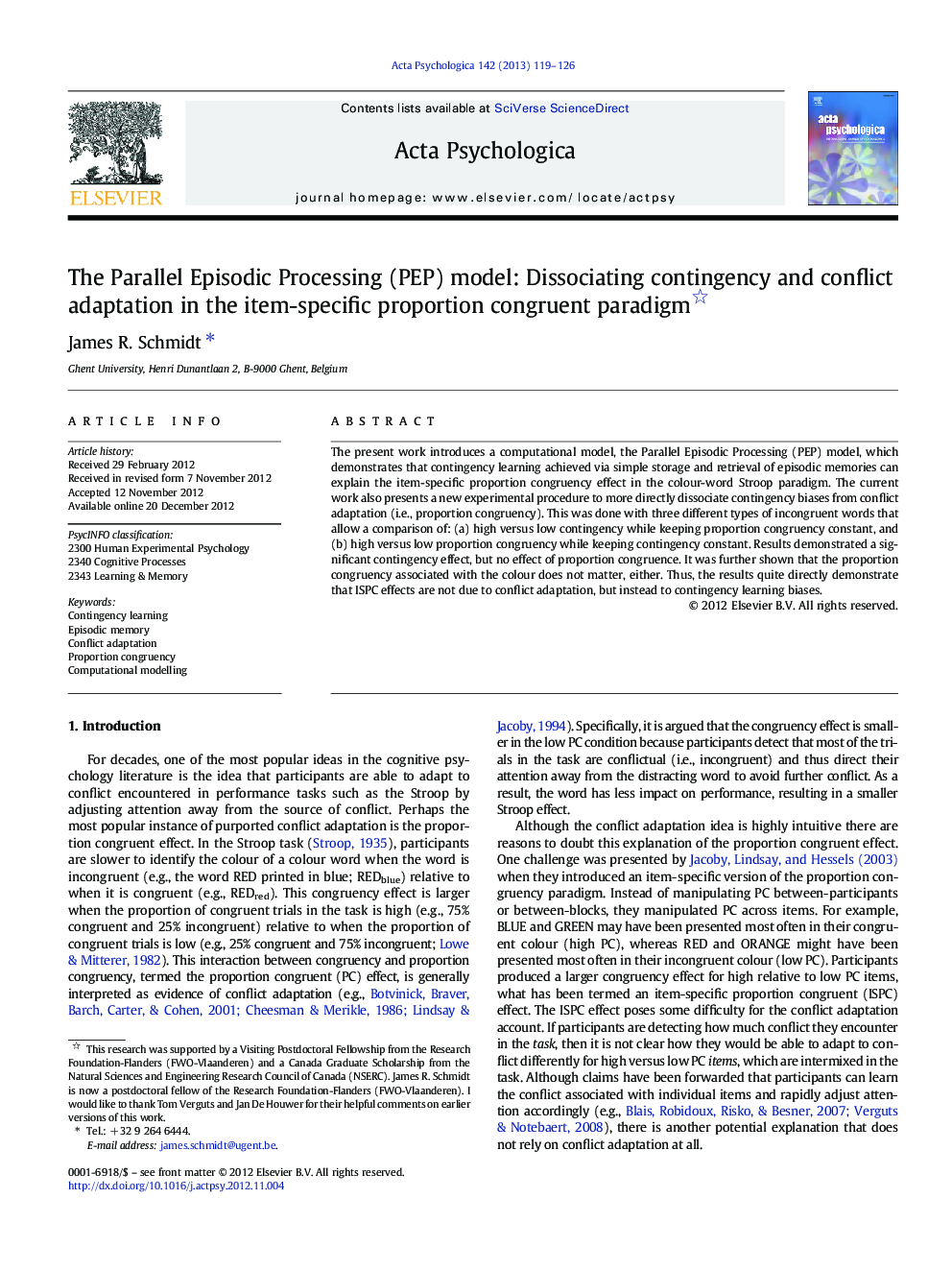| کد مقاله | کد نشریه | سال انتشار | مقاله انگلیسی | نسخه تمام متن |
|---|---|---|---|---|
| 919944 | 920252 | 2013 | 8 صفحه PDF | دانلود رایگان |

The present work introduces a computational model, the Parallel Episodic Processing (PEP) model, which demonstrates that contingency learning achieved via simple storage and retrieval of episodic memories can explain the item-specific proportion congruency effect in the colour-word Stroop paradigm. The current work also presents a new experimental procedure to more directly dissociate contingency biases from conflict adaptation (i.e., proportion congruency). This was done with three different types of incongruent words that allow a comparison of: (a) high versus low contingency while keeping proportion congruency constant, and (b) high versus low proportion congruency while keeping contingency constant. Results demonstrated a significant contingency effect, but no effect of proportion congruence. It was further shown that the proportion congruency associated with the colour does not matter, either. Thus, the results quite directly demonstrate that ISPC effects are not due to conflict adaptation, but instead to contingency learning biases.
► A computational model of item-specific proportion congruency is presented.
► The model shows that contingency learning processes can produce interactive effects.
► An experiment dissociated contingency learning and conflict adaptation effects.
► Only evidence for contingency learning was found.
► Results call into question conflict adaptation accounts.
Journal: Acta Psychologica - Volume 142, Issue 1, January 2013, Pages 119–126